Introduction to Hanging Bookshelves: Beyond Traditional Storage
Hanging bookshelves redefine interior design by blending artistry with practicality. Unlike floor-standing bookcases, these suspended structures attach to walls, freeing floor space while adding architectural interest. Their minimalist profiles and customizable designs make them ideal for small apartments, modern lofts, or spaces needing a visual lift.
The term “hanging bookshelves” encompasses a wide range of styles, from sleek floating shelves to whimsical suspended racks. While they are often used for books, their versatility extends to displaying decor, art, and even small appliances. For homeowners seeking to maximize vertical space while maintaining a clutter-free aesthetic, hanging bookshelves are a transformative choice. However, their popularity has led to a crowded market, making it essential to understand features like material durability, installation methods, and design compatibility.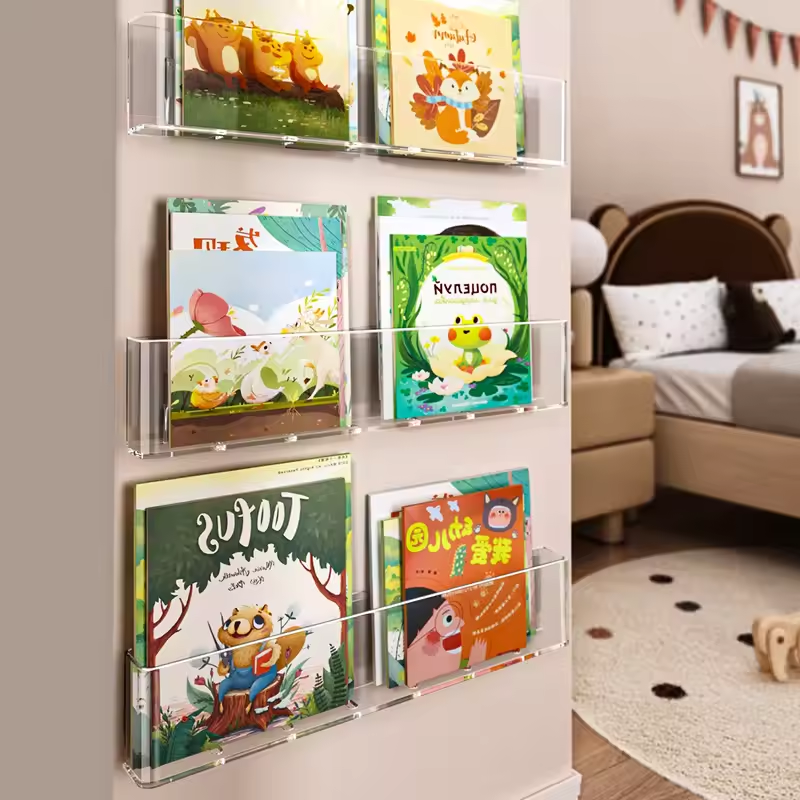
Design Trends: Modern and Industrial Hanging Bookshelves
Modern and industrial hanging bookshelves dominate current design trends, offering sleek storage solutions that merge aesthetics with functionality. Here’s how they define contemporary spaces:
Modern Styles:
- Minimalist Aesthetics: Clean lines, neutral tones (white, black, or light wood), and hidden brackets create an airy, floating effect.
- Geometric Shapes: Angular or asymmetrical designs add visual interest—think triangular shelves or staggered horizontal placements.
- Glass and Metal: Clear glass or brushed stainless steel shelves emphasize transparency and lightness.
Industrial Styles:
- Raw Materials: Exposed metal brackets, unfinished wood, or reclaimed beams evoke a rugged, urban vibe.
- Dark Accents: Black iron, weathered wood, or industrial-inspired finishes (e.g., matte black pipes) anchor rooms with edgy contrast.
- Functional Flair: Open shelving paired with pendant lights or exposed cables highlights industrial authenticity.
Hybrid Ideas:
- Combine modern minimalist shelves with industrial brackets for a balanced look.
- Use Bookshelf Ideas like suspended wire racks or cable-exposed installations to bridge both styles.
These trends thrive due to their adaptability: modern designs suit sleek apartments, while industrial styles add character to lofts or warehouses. Both prioritize open layouts, making them ideal for small spaces. Whether minimalist or rugged, hanging bookshelves now define spaces where form and function meet boldly.
Installation Guide for Safe and Secure Hanging BookShelves
Installing hanging bookshelves requires careful planning to ensure stability and safety. Follow these steps for a secure setup:
- Tools and Materials:
- Gather a stud finder, level, drill, screws rated for your shelf’s weight, wall anchors (if needed), and heavy-duty brackets.
- Plan Layout:
- Mark shelf positions using a level. Prioritize wall studs for mounting; studs are typically spaced 16–24 inches apart.
- Avoid placing shelves above doorways or in high-traffic areas.
- Drill Pilot Holes:
- Use the stud finder to locate studs. For non-stud areas, use toggle bolts or heavy-duty anchors.
- Drill holes slightly smaller than your screws to prevent wall cracking.
- Secure Brackets:
- Attach brackets firmly to the wall. For multi-tiered systems, stagger brackets for even weight distribution.
- Use screws at least 2–3 inches long for drywall or 1.5 inches for studs.
- Install the Shelf:
- Slide the shelf onto brackets and tighten screws completely. Ensure no wobbling; adjust brackets if needed.
- Test load capacity by placing lighter items first before adding heavier decor.
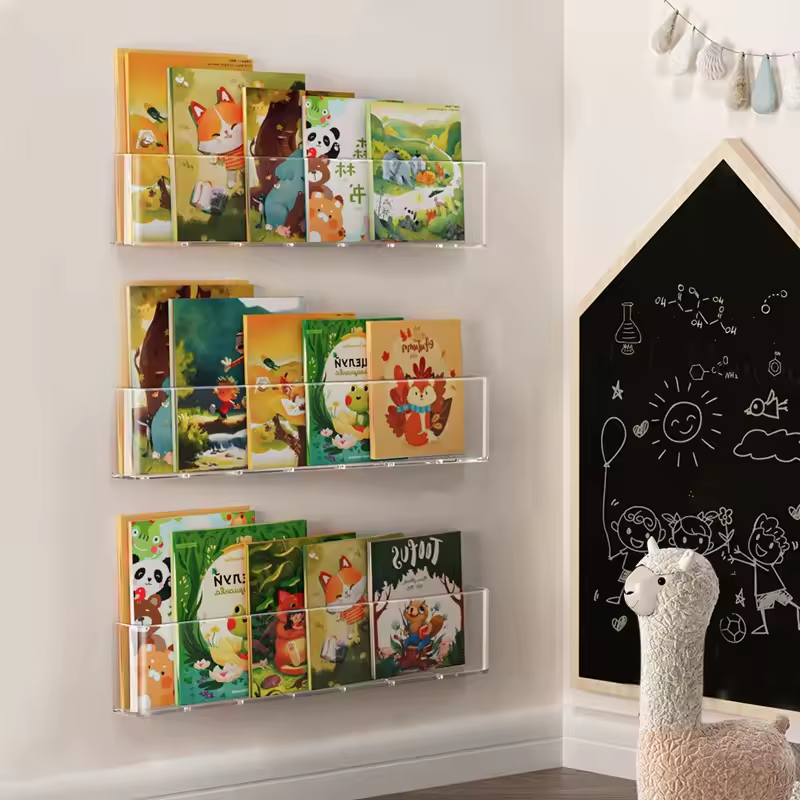
Safety Tips:
- Weight Limits: Never exceed the bracket’s weight capacity. Glass or metal shelves may require reinforced mounts.
- Avoid Overcrowding: Distribute items evenly to prevent imbalance.
- Regular Checks: Inspect screws and brackets annually for loosening.
For hanging bookshelves holding heavy items (e.g., TVs or books), consider professional installation. Proper execution turns these shelves into durable, long-lasting fixtures that enhance both style and safety.
Material Choices: Durability and Aesthetic Appeal
Selecting materials for hanging bookshelves involves balancing longevity with visual impact. Here’s how popular options compare:
- Wood:
- Durability: Solid woods (e.g., oak, teak) resist warping but require sealing for moisture. Plywood is budget-friendly but less sturdy.
- Aesthetic: Warm tones and natural grains suit rustic, minimalist, or Scandinavian styles.
- Metal:
- Durability: Stainless steel or powder-coated iron withstand heavy loads and scratches. Avoid uncoated metal in humid areas.
- Aesthetic: Industrial or modern appeal; black or brushed finishes contrast well with neutral walls.
- Glass:
- Durability: Tempered glass is shatter-resistant but prone to scratches. Ideal for lightweight decor.
- Aesthetic: Creates an airy, see-through look—perfect for modern or minimalist spaces.
- Composite Materials:
- Durability: Eco-friendly options like recycled plastic or MDF (medium-density fiberboard) offer affordability and moisture resistance.
- Aesthetic: Smooth finishes mimic wood or stone but lack natural texture.
Key Considerations:
- Usage: Heavy items? Opt for metal or solid wood.
- Maintenance: Glass needs regular cleaning; wood requires occasional sealing.
- Style: Match material tones to room palettes (e.g., white shelves for bright kitchens).
Smart material choices ensure shelves remain both functional and stylish over time. Prioritize longevity without sacrificing your design vision.
Space-Saving Strategies with Hanging Bookshelves Systems
Hanging bookshelves systems maximize small spaces by transforming walls into functional zones. Here’s how to optimize storage creatively:
- Vertical Stacking:
- Install shelves vertically in narrow walls (e.g., hallways) to create ladder-like storage for books, decor, or kitchenware.
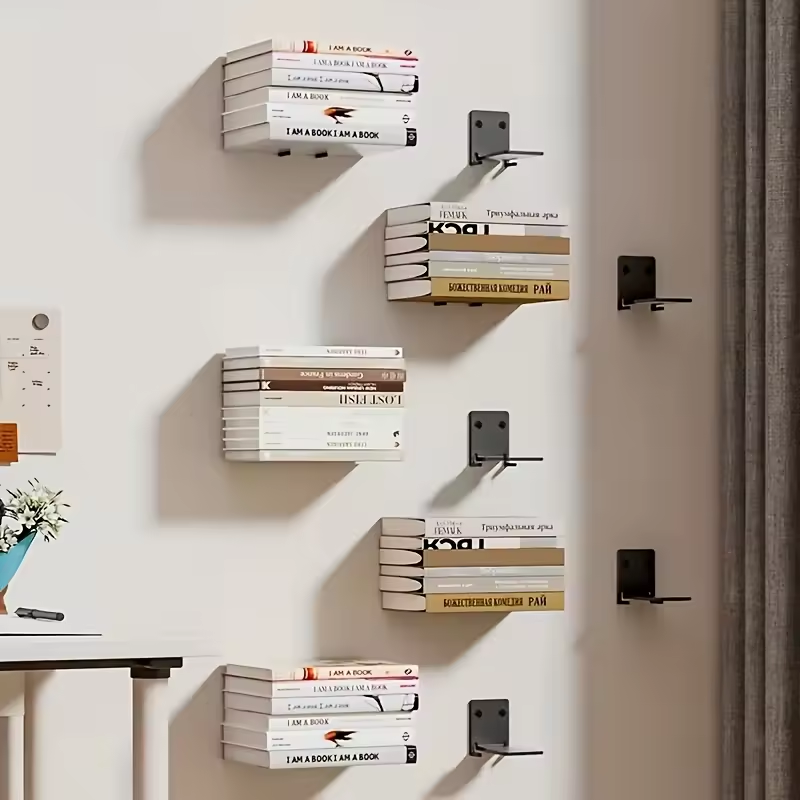
- Install shelves vertically in narrow walls (e.g., hallways) to create ladder-like storage for books, decor, or kitchenware.
- Corner Optimization:
- Use L-shaped or triangular shelves in unused corners. A floating shelf above a toilet tank saves bathroom space.
- Hybrid Systems:
- Combine hanging shelves with enclosed cabinets. Place heavy items in cabinets and lightweight decor (e.g., vases) on open shelves.
- Height Stratification:
- Install lower shelves for frequently used items (e.g., coffee mugs) and upper tiers for less-used books or seasonal decor.
- Niche Integration:
- Install shelves above beds or sofas to store books or framed photos without crowding floors.
- Slim Profiles:
- Choose narrow, shallow shelves for tight spaces like entryways. Opt for clear glass to avoid visual bulk.
Pro Tips:
- Use magnetic boards or hooks beneath shelves for keys, scarves, or tools.
- Match shelf colors to walls to create a seamless, expansive look.
These strategies turn walls into multipurpose hubs, ideal for apartments or clutter-prone rooms. Every inch counts—with smart planning, hanging bookshelf systems make small spaces feel larger and organized.
Creative Decoration Ideas for Hanging BookShelves
Hanging bookshelves are more than storage—they’re blank canvases for creative expression. Here’s how to turn them into stylish focal points:
- Art and Greenery:
- Display small sculptures, framed prints, or trailing plants (e.g., pothos or air plants) to add life and texture.
- Themed Collections:
- Showcase niche items like vintage globes, travel souvenirs, or a curated selection of clocks. A minimalist shelf can highlight a single striking piece.
- Functional Decor:
- Place small appliances (e.g., espresso makers), charging stations, or decorative trays on lower shelves for practical elegance.
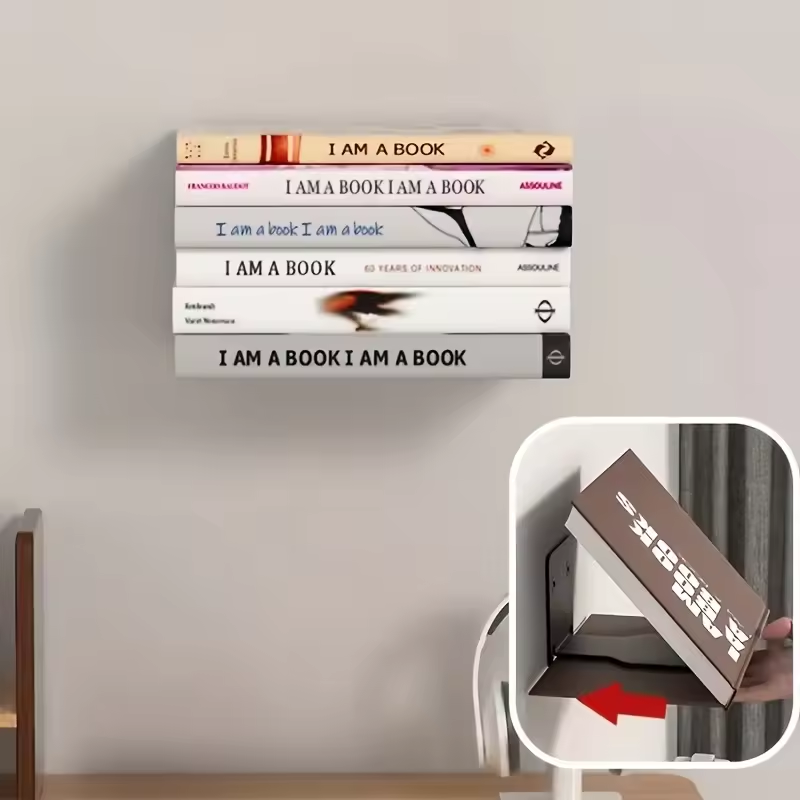
- Place small appliances (e.g., espresso makers), charging stations, or decorative trays on lower shelves for practical elegance.
- Lighting Accents:
- Mount battery-operated LED strips beneath shelves for ambient glow, or position candle holders for cozy illumination.
- Textural Layers:
- Mix materials: stack woven baskets, textured pottery, and smooth glass vases for visual depth.
- Personal Mementos:
- Arrange family photos, travel mementos, or handwritten notes in frames to add a personal touch.
Pro Tips:
- Balance symmetry with asymmetry (e.g., pair a tall vase with smaller books).
- Use shelves as color accents—paint them bold hues to contrast neutral walls.
Whether minimalist or maximalist, hanging shelves let you turn walls into dynamic displays of personality and style.
Common Mistakes to Avoid During Installation
Neglecting key steps during installation of hanging shelves risks safety and structural damage. Here’s how to avoid pitfalls:
- Ignoring Wall Studs:
- Relying solely on drywall anchors for heavy shelves can cause sagging or collapse. Always secure brackets to wall studs whenever possible.
- Improper Measurement:
- Skipping levels or misaligning brackets leads to uneven shelves. Double-check horizontal alignment and spacing between tiers.
- Overloading Shelves:
- Exceeding the bracket’s weight limit strains mounts. Distribute weight evenly and avoid placing heavy items (e.g., large TVs) on lightweight brackets.
- Poor Bracket Selection:
- Using low-quality or under-sized brackets compromises stability. Match brackets to the shelf’s material and intended load.
- Skipping Pilot Holes:
- Drilling without pilot holes may crack walls or strip screws. Pre-drill holes slightly smaller than the screw diameter.
- Neglecting Safety Checks:
- Test shelves post-installation by gently pushing on them. Ensure no wobbling; reinforce loose mounts immediately.
Solutions:
- Use a stud finder, quality tools, and manufacturer-recommended hardware.
- Start with lightweight items and gradually add heavier decor.
Avoiding these mistakes ensures hanging shelves remain functional and safe for years. Always prioritize stability over aesthetics during installation.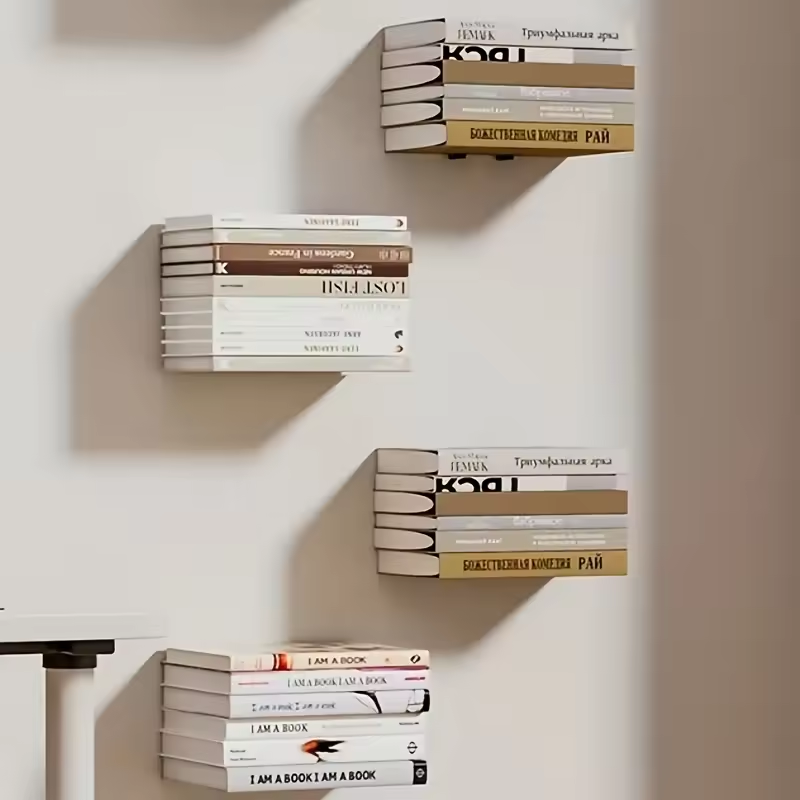
Future Innovations in Hanging Shelf Technology
The evolution of hanging shelf technology promises smarter, greener, and more adaptive designs. Here’s what’s on the horizon:
- Smart Integration:
- Shelves with built-in USB ports, wireless charging pads, or motion-activated LED lighting will become standard. Some may even sync with smart homes for automated adjustments.
- Sustainable Materials:
- Eco-conscious options will dominate, using recycled plastics, bamboo, or 3D-printed composites to minimize waste. Biodegradable brackets and solar-powered LED strips are emerging trends.
- Adaptive Designs:
- Motorized shelves that adjust height via remote control cater to accessibility needs, while magnetic mounts allow instant reconfiguration.
- Modular Systems:
- Interlocking panels let users expand or reshape shelves as needs evolve, reducing replacement waste.
- Holographic Illusions:
- Holographic panels or AR apps may create “floating” effects without physical shelves, blending virtual and real storage.
- Biometric Safety:
- Fingerprint-locked shelves or childproof compartments enhance security for valuables or breakables.
These innovations reflect a shift toward eco-conscious tech and user-centric flexibility. As hanging shelf technology advances, they’ll become essential smart-home elements, balancing cutting-edge functionality with timeless design.